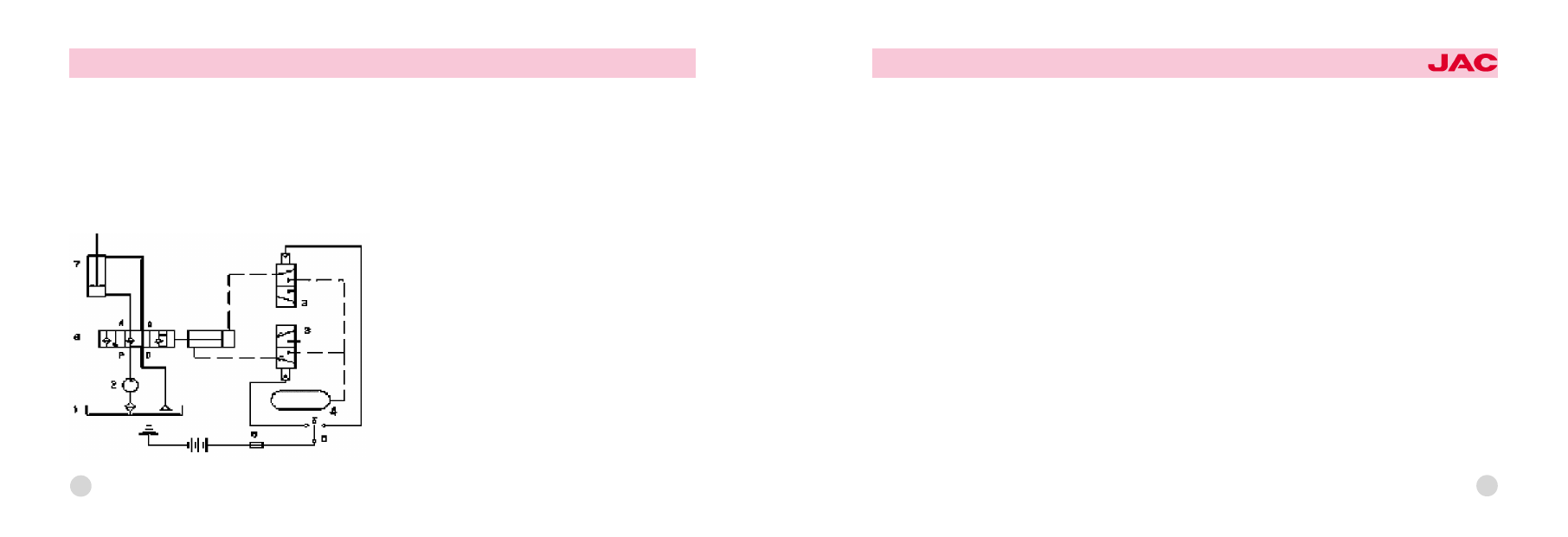Content .. 1266 1267 1268 1269 ..
Isuzu N-Series. Manual - part 1268

Diagram 5 illustrates the working principle of power take-off control system. When the switch is turned on, the com鄄
pressed air in the reservoir will flow to the power take-off cylinder through the electromagnetic valve, which will push the
gear of the power take-off to mesh with the gear of the transmission. When the power is turned off, the air in the cylin鄄
der袁under the influence of the return spring of the power take -off cylinder, will be discharged into the environment
through the vent of electromagnetic valve. The gear of the power take-off will be separated from that of the transmis鄄
sion, cutting off the power of the pump.
音 The hydraulic principle diagram of dumping system
1. hydraulic oil tank
2. gear pump
3. electromagnetic gas valve
4. air tank
5. 3-gang switch
6. air slide valve
7. hydraulic oil tub
8. the fuse
196
OWNER爷S MANUAL
JAC HEAVY DUTY TRUCK
Diagram 6 shows the hydraulic principle of the dumping system. From it we can see that the carriages in the system can
pause or fall down, free of the influences of the oil pump's working conditions. Namely, as the carriages are being
paused or falling, the oil pump can still be at work. The simplification of the operation in the pausing condition is achiev鄄
able. The air slide valve, numbered 6, which is factually a 5/4 way air control valve, helps lift, pause or drop the car鄄
riages by means of the switch (numbered 5). When the air control valve is on the left, the hydraulic oil flows through the
oil tank (1), the gear pump (2), and "P"& "A": the entrances to the air control valve fall down towards the bottom of the oil
tub, the carriages are lifted. The oil on the upper part of the tub, however, retreats to the tank by way of "B" &"O". In the
case where the air control valve is in the middle (as is signified in the diagram), the line along which the hydraulic oil fi鄄
nally returns to the tank consists of the tank, the bump gear and entrances "P"& "O"; now the carriages are paused. On
the right as the air control valve is (the carriages having been raised), part of the oil, due to the gravity of the carriages,
comes back through entrances "A"& "O" to the tank; still a certain amount of the oil goes back, passing the tank, the
bump gear and entrances P&O. Meanwhile, the downward movement of the tank's pistol renders the upper part of the
tank vacuum. Some oil, under this situation, enters the upper part of the tank through entrance B.
197